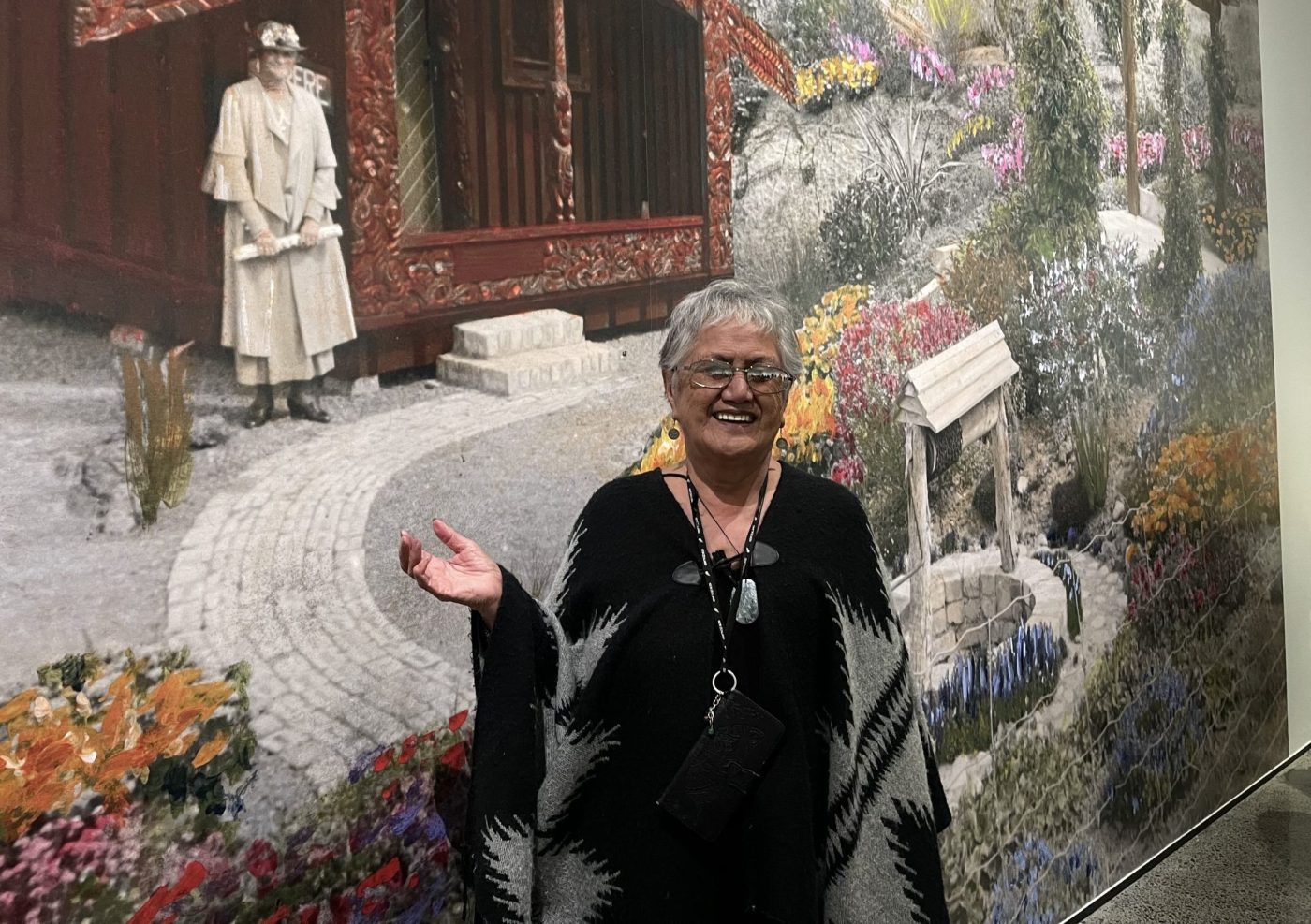
- By Hope Milo, UoA Communications Student
The Malcolm Smith Gallery at Uxbridge Arts and Culture in Howick was filled with song, story and celebration for the recent opening of Kotahitanga: Ō Wairoa Marae in the Tainui Garden of Memories.
The evening began with a pōwhiri held in the Marae garden, where guests were welcomed before being guided into the gallery to view the exhibition of photographs, archival artefacts, and taonga (treasures).
Kotahitanga, meaning “togetherness”, “unity”, or “solidarity”, honours the legacy of Emilia Maude Nixon, who established the Tainui Garden of Memories in 1925 with support from Ngāi Tai kaumātua (elders).
The exhibition’s name was also inspired by the legacy of the late Māori King, Tūheitia Pōtatau Te Wherowhero VII.
Under the guidance of the Kīngitanga (Māori King movement) and local iwi, Nixon aimed to build cross-cultural understanding.
She created the site to serve as a bridge between communities, envisioning it as a place of respect and shared history.

A special display cabinet was unveiled by Te Kaahui Ariki Ngaire Lasika, representing the Kīngitanga, alongside Ngāi Tai artist Emily Karaka.
The cabinet contains two significant taonga: Rangimārie, a pounamu mauri stone gifted in 1945 by Princess Te Puea, and a patu parāoa gifted by Waikato at the dedication of Torere in 1947.
Guests then gathered in the Uxbridge theatre for speeches from Pita Turei of Ngāi Tai ki Tamaki and Howick Local Board chair Damian Light.
Turei recounted the whakapapa of the whenua, speaking of his “tūpuna (ancestors), the stories of the land and the love stories that bind us”.
Light acknowledged the exhibition’s significance and admitted the need for stronger commitment.
“As an organisation, Auckland Council, the local board, we can do a lot more to support the kaupapa and mahi that happens in the Ō Wairoa Marae,” he said.
“We must, and we will, do better. We can learn from the example left by Emilia Maude Nixon: to take an interest in the history, the art, and the culture of mana whenua, to create space for conversations, to learn and to connect.”
Throughout the evening, many acknowledged the dedication of Whaea Taini Drummond, who’s served as kaitiaki (caretaker) since 1983.

Te Haua Taua, whose connection to Ō Wairoa Marae stretches back generations, recalled a 2004 arson attack as a pivotal moment in the site’s history.
“Without Whaea Taini’s resilience, we wouldn’t have our whare today and our kōrero would be lost.”
Taua also recognised the return of the Maxwell, Kirkwood and Graham whānau, descendants of those who first opened Torere.
“For the first time in a long time, we whānau of the tūpuna who opened the whare Torere in 1936 [are here] to honour the legacy that has survived because of Whaea Taini and her leadership … to look after this whenua, our taonga and marae for us all today.”
The evening concluded with waiata and birthday cake in the foyer, commemorating 100 years since the Tainui Garden of Memories’ first opening.
Kotahitanga: Ō Wairoa Marae in the Tainui Garden of Memories is open for public viewing until June 21.
The exhibition, curated by Zoë Black with support from Uxbridge’s Zoë May and director Paul Brobbel, was delivered in partnership with Auckland Council, Auckland Libraries, Howick Historical Village, and Te Tuhi.









